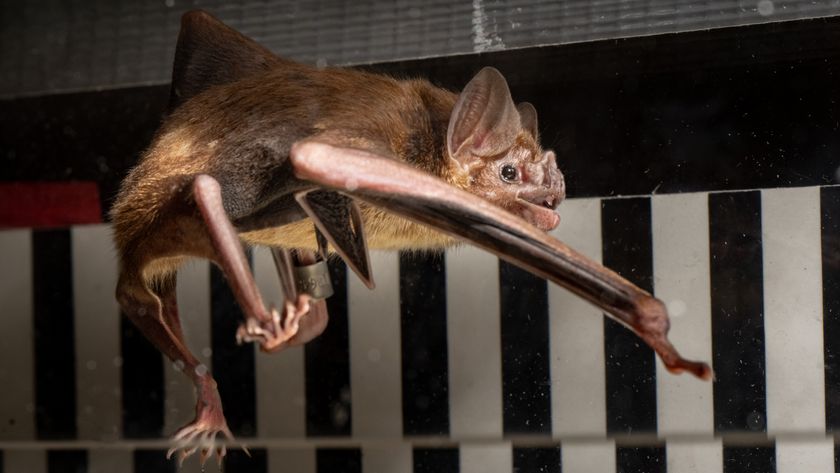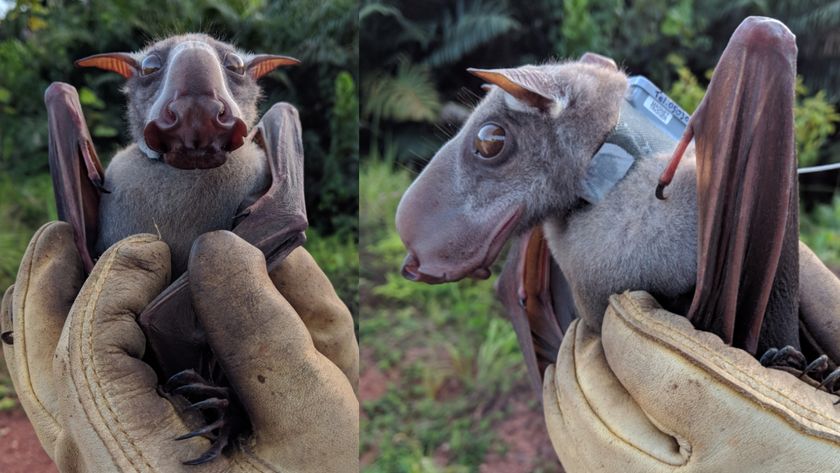Science Shields Bats from Wind-Turbine Accidents

Researchers have developed an interactive tool that uses bat calls and local environmental conditions to help wind farms reduce bat fatalities while still running efficiently.
Bat activity depends on the time of year and a number of environmental factors, such as wind direction and speed, moon phase and air temperature, according to researchers from the U.S. Department of Agriculture's Forest Service's Pacific Southwest Research Station. The new tool allows users to visualize the probability of bat presence based on changes in date and weather conditions.
Previous research has shown that changing the operations of turbines can reduce the number of bat fatalities at wind-energy facilities.
"Increasing the wind speed at which turbines begin to spin and produce energy to the grid has proven to be an effective way to reduce bat fatalities. However, bat activity levels depend on more than just wind speed," study researcher Ted Weller, an ecologist at PSW, said in a statement. "Our work demonstrates the use of a decision-making tool that could protect bats when fatality risk is highest while maximizing energy production on nights with a low chance of fatalities."
Using devices to detect bats' echolocation calls, the researchers linked the presence of bats to weather conditions measured on-site. The results showed that multiple echolocation detectors were required to accurately characterize bat activity.
The study also showed that echolocation detectors placed at 72 feet and 170 feet (22 meters and 52 meters) above ground were more effective at characterizing migratory bat activity than those closer to the ground. The researchers used these findings to help build the interactive tool, which can be found on the PSW website.
"Properly deployed echolocation monitoring can be an effective way to predict bat activity and, presumably, fatalities at wind-energy facilities," Weller says. "These days, pre-construction echolocation monitoring is as common as meteorological monitoring at wind-energy facilities, so the basic building blocks for these models are available at most proposed sites."
Sign up for the Live Science daily newsletter now
Get the world’s most fascinating discoveries delivered straight to your inbox.
The study authors note that bat migration patterns are still poorly understood and that further research is being conducted regarding the relationship between wind turbines and bat activity.
You can follow LiveScience writer Remy Melina on Twitter @remymelina. Follow LiveScience for the latest in science news and discoveries on Twitter @livescience and on Facebook.













